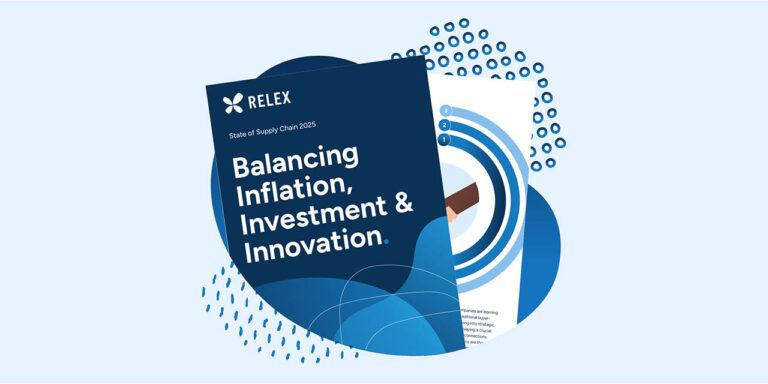Study of American grocers uncovers opportunity in competitive market
Jan 21, 2020 • 3 min
RELEX partnered with EnsembleIQ to conduct a survey of leading North American food retailers, gathering insights into how grocers assess today’s competitive market. The report, Planning for Every Future in Grocery Retail, lays out their responses, as well as their initiatives to improve their supply chain planning and retail operations.
It’s not enough to operate an online channel — grocers have to get omnichannel right
Online grocery already carries great importance today, but trends suggest it may be tomorrow’s kingmaker. A recent report projects that online grocery will grow by 13% between 2019 and 2024 — to about $162 billion in sales.
In that time, Amazon’s online grocery sales are likely to almost double from $8 billion to $15 billion. Amazon’s 2017 acquisition of Whole Foods was followed quickly by Prime Now home delivery of Whole Foods products. In a new development, 2019 saw Amazon Fresh’s inclusion in the standard Amazon Prime subscription. Their looming threat in the online grocery arena is on retailers’ minds: 43% of respondents believe Amazon is taking away market share, and 41% feel helpless in the face of the ecommerce giant’s massive resources.
Grocers are already moving in the right direction, though, with 63% in this study already operating an online channel. Unfortunately, just building an omnichannel model doesn’t mean retailers are effectively strengthening their businesses to withstand the pressures of Amazon and, increasingly, Walmart. 52% generate demand forecasts at a store-product-day level, in line with best practice, but only 4% of the respondents who pick online orders in-store separate forecasts at that level of granularity by channel. 15% forecast by channel at a store-product-week level, but that level of granularity is too low. To get omnichannel right, grocers must forecast by channel at a store-product-day level of granularity. Only then will they have the supply chain visibility to improve business decisions, market position, and service levels.
Fresh is still critical, and that’s not going to change
Not a single respondent in the study said that fresh products were unimportant to the success of their business going forward. This isn’t surprising, considering how quickly poor management of fresh products can undermine a grocer’s profitability.
Fresh spoilage is enormously costly. Two out of every three grocers surveyed are losing over 1.5% of their business’s annual revenue to expired and spoiled products. Put another way, a grocer with $1 billion in revenue will lose $15 million to spoilage alone. 22% actually lose up to 2.4% of annual revenue, which would translate to $24 million in potential spoilage costs for a $1 billion grocer.
Fresh products are not easy to manage. In fact, they’re one of the greatest challenges in grocery supply chain management. The most effective way to reduce fresh spoilage rates is by implementing integrated supply chain processes, in which automatic replenishment planning draws from highly accurate demand forecasts. Replenishment plans should take granular, day-level forecasts, dynamic safety stock levels, and automatic spoilage monitoring into consideration to ensure the right amount of perishable product is available to meet customer demand without costing the retailer spoilage losses.
The largest amount of respondents who successfully contained spoilage use best of breed systems for demand forecasting, while those with ERP systems comprised the smallest demographic to achieve low spoilage rates. In fact, more grocers found success using spreadsheets to manually calculate their forecasts than they did with ERP systems.
The technology strategies grocers build today will impact their businesses for years to come. Read the full report, Planning for Every Future in Grocery Retail to gain more insights into what challenges grocers are facing today and how they’re shaping their technology strategies to turn challenge into opportunity.



